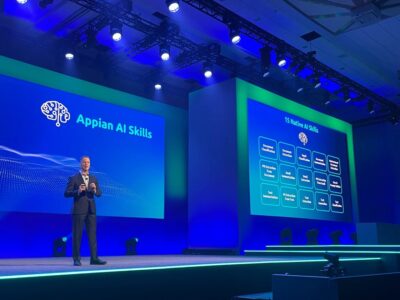Deborah gives me a sidelong glance when I scoot up next to her to chat, which is fair because she’s not here to speak with the press. Today, Deborah’s here to master Microsoft PowerPoint.
It’s a sunny Tuesday afternoon as I make my way out of the Brookland metro station, past the throngs of Catholic University students and across Monroe Street. It is from this nondescript, two-story brick building on the corner that the digital inclusion nonprofit Byte Back operates a widespread educational program that, in 2015, served nearly 1,000 low-income D.C. residents.
See, D.C. is a city divided. A 2008 study found that Wards 5, 7 and 8 have decidedly lower home broadband adoption rates than the rest of the city. And while there’s a positive trend toward digital inclusion, there remains cause for concern that with all of D.C.’s tech innovation, certain individuals are being left behind.
This is where Byte Back comes in. The 19-year-old nonprofit is just one D.C.-based digital inclusion initiative, but it’s an impressive one. And the organization’s new executive director, Elizabeth Lindsey, has her sights set on making it even better.
Lindsey, who joined Byte Back in September, calls her current role the “culmination of all my career dreams.” That said, there are challenges. Byte Back has grown quickly over the past six years, Lindsey says, and some of the systems haven’t yet caught up.
Indeed, as I watch the evening’s volunteer instructors set up for class, the gigantic desktop PCs crash more than once. It seems sadly ironic that an organization teaching modern digital literacy is doing so with outdated technology. But then again, maybe the most important lesson Byte Back can teach its students is how to deal with a computer that’s not working properly. We’ve all been there.

In the classroom with Byte Back on PowerPoint day. (Photo by Tajha Chappellet-Lanier)
Back with Deborah I ask what she thinks about the class, why she’s here and what she’s proud of. While slowly starting to warm up, Deborah tells me she’s been unemployed for over ten years. She hopes some new, digital skills will enable her to get a job, perhaps back in the federal government. She likes the class, she says; she’s most proud of mastering Microsoft Excel.
The class I’m sitting in is called “Office Track,” it’s a 12-week, intermediate level skill course and it’s just one of the classes Byte Back offers. This particular cohort is being taught in a classroom in Byte Back HQ, but the organization teaches courses all over the District, often in public libraries.
The classroom is toward the back on the building that houses Byte Back — a medium-sized room with high windows and walls featuring motivational posters. “Believe & Succeed,” one commands, accompanied by a photograph of a sunset. There are five students, four women and one man, and the average age looks to be somewhere in the 50s.
A Byte Back annual report from 2015 confirms my guess is probably not far off: the median age of students in the beginner classes is 56; in the advanced classes it’s 43.
Today in Office Track the students are being introduced to Microsoft PowerPoint. It’s last up of the Microsoft suite — this class will graduate in just a few weeks. Matt and Erica, the teachers, greet every entering student by name. There’s a comfortable familiarity in the room.
Matt and Erica start by talking about what PowerPoint is good for and, just as importantly, what it isn’t good for. They have the students open up a blank template and walk through each button, arrow and tab on the tool bar. This, Matt and Erica tell me, is the most challenging part of teaching at Byte Back — remembering to go back to the basics.

The blank slate. (Photo by Tajha Chappellet-Lanier)
Do you remember those first moments after opening your first PowerPoint? I certainly don’t. But watching the students deduce their way along, with Matt and Erica’s patient help, is impressive. Matt and Erica say that despite all the challenges, this kind of impact is what keeps them teaching.
Over the next couple classes, the students will master PowerPoint and give a presentation, on a topic of their choice, to show off their skills. They’ll graduate from the intermediate level, and some will move on to an advanced class. They’ll take their new abilities out into the world — to a current job or, as in Deborah’s case, to the hunt for one. Byte Back, with its careers services program, will do its best to aid each student along her journey.
As I make my way back out of Byte Back HQ, across Monroe and down the stairs into the Brookland metro station I can’t help but think about what a difference 12 weeks makes.
Join the conversation!
Find news, events, jobs and people who share your interests on Technical.ly's open community Slack

DC daily roundup: Esports at Maryland rec center; High schoolers' brain algorithm; Power data centers with coal?

DC daily roundup: Tyto Athene's cross-DMV deal; Spirit owner sells to Accenture; meet 2GI's new cohort

DC daily roundup: $10M to streamline govt. contracting; life sciences might dethrone software; Acadia's new $50M

